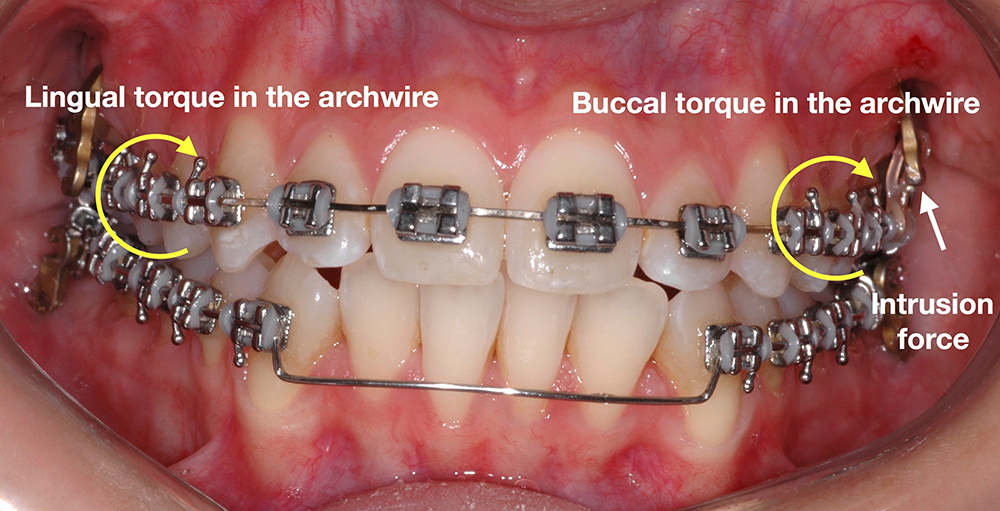By Marcel Marchiori Farret, Professor, Graduate Specialization Course in Orthodontics, Meridional Center of Dental Studies, Passo Fundo, e Graduate Specialization Course in Orthodontics, Foundation of the Rehabilitation of Craniofacial Deformities (FUNDEF), Lajeado, RS, Brazil
In article “Occlusal plane canting: a treatment alternative using skeletal anchorage” published of Dental Press Journal of Orthodontics (vol. 24, no. 1), are discusses the main aspects of diagnosis, planning and treatment of occlusal plane asymmetries. Diagnoses should be made carefully using several resources, such as clinical examinations, photographs and radiographs, as well as software applications, such as Power Point® and Keynote®. Based on the diagnosis, decisions should be made about where and how the asymmetries should be corrected, so that the most adequate skeletal anchorage devices are selected and placed. Micro-implants, recommended for moderate asymmetries, are simpler to place and remove. Miniplates, in contrast, are preferred when treating complex conditions, which may require larger movements or movements in more than one direction simultaneously, however, miniplates require two invasive surgical procedures for their placement and removal (FABER, et al., 2008; SUGAWARA, et al., 2002).
Figure 1. Torque control in the archwire during the intrusion on the left side of the upper arch.
Although the use of skeletal anchorage minimizes side effects, several details should be noted during treatment to optimize outcomes. Anchorage preparation using auxiliary devices, such as a transpalatal bar in the maxillary arch or a lingual archwire in the mandibular arch, is fundamental to avoid overexpansion of the dental arches during intrusion in cases in which forces are applied only buccally or lingually. Moreover, the use of rectangular archwires is also recommended to control torque during intrusion and extrusion.
A correct diagnosis and a careful case management plan lead to excellent esthetic and functional results, with good long-term stability after the end of treatment. They also reduce the need for complex orthodontic procedures and patient collaboration, and often eliminate orthognathic surgeries.
References
FABER, J., et al. Miniplates allow efficient and effective treatment of anterior open bites. Rev. Dent. Press Ortodon. Ortop. Facial [online]. 2008, vol. 13, no. 5, pp. 144-157, ISSN: 1980-5500 [viewed 2 August 2019]. DOI: 10.1590/S1415-54192008000500015. Available from: http://ref.scielo.org/yyjnqq
SUGAWARA, J., et al. Treatment and posttreatment dentoalveolar changes following intrusion of mandibular molars with application of a skeletal anchorage system (SAS) for open bite correction. Int J Adult Orthodon Orthognath Surg. 2002, vol. 17, no. 4, pp. 243-253, ISSN: 0742-1931 [viewed 2 August 2019]. Available from: https://www.ncbi.nlm.nih.gov/pubmed/12592995
To read the article, access it:
FARRET, M.M. Occlusal plane canting: a treatment alternative using skeletal anchorage. Dental Press J. Orthod. [online]. 2019, vol. 24, no. 1, pp. 88-105, ISSN: 2176-9451 [viewed 2 August 2019]. DOI: 10.1590/2177-6709.24.1.088-105.sar. Available from: http://ref.scielo.org/ffwp99
External link
Dental Press Journal of Orthodontics – DPJO: <http://www.scielo.br/dpjo>
Como citar este post [ISO 690/2010]:



















Recent Comments